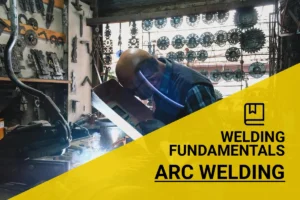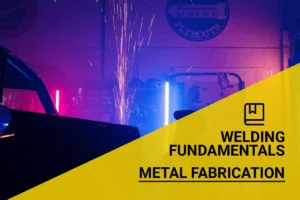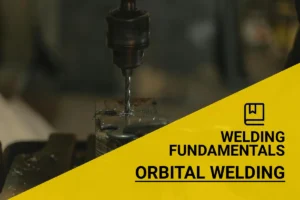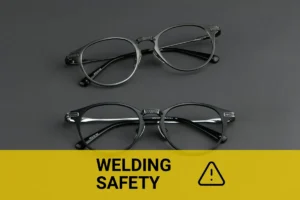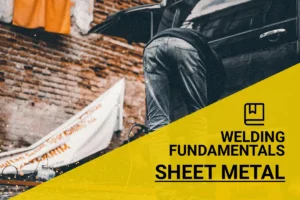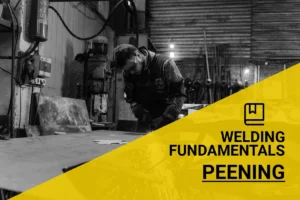What is a Lap Weld? – Definition, Types, and How to Weld
Published on: April 13, 2025 | Last modified: March 4, 2025
By: Joe Carter
A lap weld is a simple welding joint where two pieces of metal overlap each other. It’s often used in various applications because it’s easy to perform and strong.
So, if you’re wondering what is a lap weld, you’re not alone! Understanding this technique is vital, and I’ve seen firsthand how it can impact your projects. A well-done lap weld ensures strength and stability in your work, making it a key skill for welders.
In this article, we’ll explore how a lap weld works, different types of lap welds, steps to perform a lap weld, factors that influence a lap weld, common issues, and also aftercare, inspection tips, and applications. We’ll also dive into alternatives for lap welding and answer some frequently asked questions about what is a lap joint in welding.
Contents
- What is a Lap Weld?
- How Does a Lap Weld Work?
- Types Of Lap Welds
- Advantages and Disadvantages of Lap Welding
- Steps to Perform a Lap Weld
- Factors Influencing a Lap Weld
- Common Issues With Lap Welds
- Applications Of Lap Welding
- What Are the Alternatives to A Lap Weld?
- Frequently Asked Questions (FAQs)
- Conclusion
- Additional Reading
What is a Lap Weld?
A lap weld is a type of joint where two pieces of material overlap. This method enhances strength by maximizing surface area and is often used in sheet metal fabrication, vehicle frames, and piping because it’s quick and cost-effective. Discover more about the components that make these techniques efficient and cost-effective, including DC inverter welding machines.
How Does a Lap Weld Work?
A lap joint weld is a joint where two pieces of metal overlap and are welded together. It’s simple yet effective, providing good strength for many projects. You typically find lap welds in sheet metal applications. They can handle loads well, usually rated at around 70% of the base metal’s strength.
When working on lap joints, using the right technique is vital to ensure a solid bond. It’s crucial to clean the surfaces, set the right parameters, and choose the appropriate filler material for optimal results.
I once made a mistake by not cleaning the surfaces before lap welding. The weld didn’t hold, and I had to redo the entire joint. If you’re wondering how to weld lap joints correctly, always prepare the metal properly first to avoid costly mistakes.
Types Of Lap Welds
Square Lap Welds
Square lap welds feature two sheets stacked flat with aligned edges. This type creates a strong bond between metals. To perform a square lap weld, ensure the surfaces are clean, assemble the sheets, and use a welding technique like MIG or TIG. For those looking to master techniques on welding sheet metal, understanding proper setup and execution is essential.
Bevel Lap Welds
Bevel lap welds angle the edge of one sheet to promote better penetration, resulting in a stronger joint than square lap welds. To execute a bevel lap weld, bevel the top sheet’s edge, align it over the bottom sheet, and apply a consistent weld across the joint. Knowing the various types of welding joints can enhance your welding skills and ensure the most suitable joint selection for any project.
Flanged Lap Welds
Flanged lap welds connect pieces with a lip (Flange) extending from the edge, improving joint strength and structural integrity. To achieve this, create a flange on the sheet, overlap it, and weld along the edge for strong adhesion.
Edge Lap Welds
Edge lap welds overlap the edges of two plates, offering a durable option, although less visually appealing. They work well for thinner materials. To perform edge lap welding, align the edges, maintain a proper gap, and weld them together to ensure uniform heat distribution.
Corner Lap Welds
Corner lap welds join two sheets at a right angle, creating a sturdy connection. This method is suitable for making frames or boxes. To do a corner lap weld, position the sheets to form a corner and weld along the joining lines, ensuring full puddling.
So far, we covered the various types of lap welds. Next, let’s look at the pros and cons of lap welding.
Advantages and Disadvantages of Lap Welding
Understanding the pros and cons of lap welding can help you decide if it’s right for your project.
| Advantages | Disadvantages |
|---|---|
|
|
So, have you weighed the pros and cons for your situation? Keeping these in mind can help prevent headaches later on!
That covers the pros and cons of lap welding. Let’s now take a look at the steps to perform a lap weld.
Steps to Perform a Lap Weld
Now, we’ll cover how to perform a lap weld effectively.
-
Clean the Surfaces
Start by cleaning the surfaces to be welded. Use a wire brush or grinder to remove rust, paint, or contaminants. A clean surface increases weld strength, so aim for a surface roughness of less than 0.1 mm (0.004 Inches). I once had a weak lap joint because I skipped this step—never do that!
Inspect the metal for imperfections. Resolve any issues before welding. Proper surface preparation helps create uniform heat distribution during welding, ensuring durability.
-
Align the Materials
Position the two overlapping pieces correctly. Ensure a minimum 1.6 mm (1/16 Inches) overlap for a strong joint. Use clamps to hold them together, preventing shifting while you work. The joints should line up perfectly, as any misalignment can weaken the weld.
Double-check your setup. A quick measurement ensures the overlap isn’t too large or small. Misalignment is a common mistake—be precise!
-
Select Your Electrode or Filler Material
Choose the right filler based on your base metals. For mild steel, common options are E6013 or E7018 electrodes. Aim for a diameter of 2.4 mm (3/32 Inches) for a good balance of heat and penetration. Different metals require different fillers, so don’t make random choices!
I once used the wrong diameter electrode, causing excessive spatter and a rough finish. Stick to the suitable materials for your project. Check compatibility for the best results.
-
Set Up Welding Parameters
Adjust the welder settings based on materials and joint thickness. For a 1.6 mm (1/16 Inches) thick steel lap weld, this usually requires 70-90 amps. Follow the machine’s manual for specific guidelines. Proper settings are critical for penetration and bead quality. To effectively manage current flow, it is essential to understand
what DCEP means in welding.Test your settings on scrap material first. This helps you gauge the arc length and feed speed. I always prefer to practice—a lot safer than fixing mistakes later.
-
Weld the Joint
Begin welding at one end of the lap joint. Move at a consistent speed of about 1.54 meters per minute. Use a slight weaving motion to cover the joint evenly, improving fusion. For those looking for additional insights on techniques, consulting expert welding guidance can enhance your skills. Don’t rush this part; quality matters!
Choosing the right equipment can greatly enhance your welding skills, and many beginners can benefit from using a good welder for a beginner.
Watch your heat input to avoid burn-through. If you’re using the TIG process, aim for a tight arc length—keeping it too long weakens the joint. I often remind myself to slow down and do it right!
-
Finish the Weld
After welding, let it cool naturally to prevent warping from rapid temperature changes. If you need to clean up the bead, use a wire wheel brush or grinder shortly after cooling. Finish that weld for a uniform appearance! Knowing the correct amperage for a 3/32 rod can greatly improve your welding results.
Inspect the finish for defects like cracks or excessive spatter. Taking a minute to spot-check your work can save you from bigger problems later. Don’t skip this crucial step!
We covered the steps for executing a lap weld. Next, we will cover the factors that influence a lap weld.
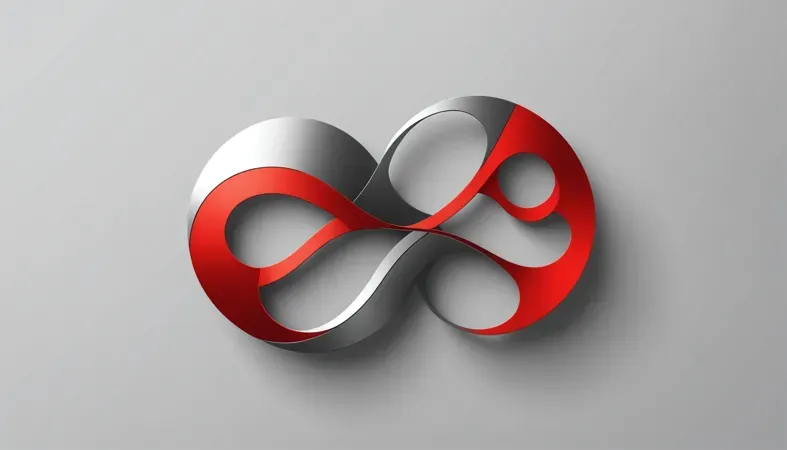
Factors Influencing a Lap Weld
What factors influence the quality and effectiveness of this welding technique?
-
Material Thickness
Material thickness is crucial in lap welding. Materials over 1/8 inch (3.2 Mm) require more heat and a different technique than thinner materials.
-
Temperature Control
Maintaining optimal temperature is vital. High or low temperatures can cause insufficient penetration, leading to weak joints, typically around 1400°F (760°C) for steel.
-
Weld Angle
The weld angle affects the joint’s strength. I once welded at the wrong angle, resulting in a poor-quality lap joint. The ideal weld angle is usually between 15 and 30 degrees.
-
Electrode Type
The choice of electrode affects penetration and bead shape. A 6013 electrode works well for general applications, but switching to a 7018 may enhance durability in structural applications.
-
Weld Speed
Weld speed impacts heat distribution and bead appearance. Faster speeds may cause lack of penetration, while slower speeds can lead to excessive burn-through. Typical speed ranges from 12 to 30 inches per minute (30 to 76 Cm/min). To ensure quality outcomes, it’s crucial to explore the different types of welding.
We’ve wrapped up the factors affecting lap welds here. Next up, we’ll look at the typical problems associated with lap welds.
Common Issues With Lap Welds
Let’s look at some issues that can arise with lap welds.
-
Insufficient Penetration
In lap welds, insufficient penetration occurs when the filler metal doesn’t reach the base metal. You can spot this by a lack of joint fusion. Increase heat or adjust travel speed to fix it.
-
Porosity in the Weld
Porosity in a lap weld shows tiny gas pockets trapped inside. I once made a mistake using dirty electrodes. Always clean surfaces and check settings to eliminate porosity.
-
Distortion Of Base Metals
Distortion in lap welds occurs due to uneven heating, which can warp your assembly. You can identify distortion by visually checking alignment; control heat input to correct it.
-
Inconsistent Weld Beads
Inconsistent weld beads in lap welds may indicate variable speed or technique. Look for uneven bead width. Maintain a steady speed and practice consistency.
-
Cracking in the Weld Area
Cracking in lap welds often arises from rapid cooling or poor weld technique. You can spot cracks visually. Use preheating and control cooling to prevent this issue.
Applications Of Lap Welding
People use lap welding for joining metal sheets, but it has many unique applications, such as:
- Automotive Manufacturing: It’s used for attaching body panels. It’s popular because it provides strength and design flexibility.
- Shipbuilding: Essential for joining hull plates. Lap welds are preferred for their corrosion resistance and ability to withstand water pressure.
- HVAC Systems: Commonly used for duct connections. They ensure airtight seals, improving efficiency and performance.
- Furniture Production: Utilized in metal furniture. Lap welding creates a sleek look without visible seams, making it favored in design.
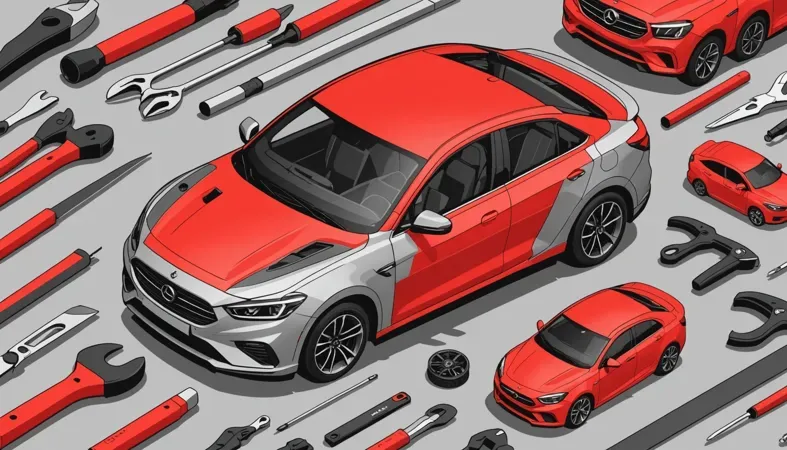
What Are the Alternatives to A Lap Weld?
There are several ways to get similar results as a lap weld. Two popular alternatives are butt welding and edge joint welding. Through trial and error, I’ve discovered that using a TIG welder, such as the Miller Syncrowave 210, often creates strong, clean joints without requiring the overlapping material.
Another option is using adhesive bonding. Products like 3M Scotch-Weld can work wonders for thin sheets where heat may warp the metal. Depending on your project needs, each method can serve you well to achieve solid connections. For those working with welding technologies, understanding the components of a semiautomatic welding system can be crucial.
Frequently Asked Questions (FAQs)
Now let us look at some common questions I typically get asked.
What is the Difference Between a Fillet Weld and a Lap Weld?
The difference between a fillet weld and a lap weld lies in their design and application. A fillet weld connects two surfaces at right angles, while a lap weld overlaps two pieces. Fillet welds offer greater strength in certain applications and are useful in welding thin materials due to minimal distortion. For those looking to master the setup of specific welding equipment, understanding how to set up a Lincoln Electric welder is crucial.
What Are the Disadvantages Of a Lap Joint?
A lap joint has some disadvantages compared to other joints. The overlap can create weak points due to heat concentration and potential for warping. Additionally, lap joints require more filler material, which adds to the overall cost of the welding process.
What is a Lap Joint Used for?
A lap joint is used primarily in sheet metal work and structural applications. This joint is ideal for joining materials that are of similar thickness. Due to its simplicity, it provides a reliable way to connect parts while simplifying the alignment during assembly.
What is the Meaning Of Weld Lapping?
Weld lapping refers to the technique of overlapping two pieces of metal before welding. This technique is essential in creating lap joints. The proper alignment and technique can lead to strong connections, especially in structural applications.
How Do You Lap Weld?
To lap weld, you first place two pieces of metal overlapping each other. Then, use a welding method like MIG or TIG. This method is popular because it’s efficient and produces strong joints without needing complex setups.
Conclusion
We covered what a lap weld is, how it works, different types of lap welds, steps for performing a lap weld, factors influencing a lap weld, common issues you might face, aftercare tips, and possible applications. We also touched on alternatives to a lap weld and answered some frequently asked questions. This gives you a well-rounded understanding of lap welding.
In a nutshell, a lap weld joins two metal pieces overlapping each other, creating a strong bond. It’s essential for various materials and has specific steps and factors that can affect quality, like cleanliness and heat settings. Feel free to reach out if you have further questions about lap welding or how to weld lap joints.
For more insight into welding techniques and applications, visit What is Welding.
Additional Reading
- American Welding Society. (2020). AWS Welding Handbook: Welding Science and Technology (Vol. 1). Miami, FL: AWS.
- Kou, S. (2003). Welding Metallurgy (2nd ed.). Hoboken, NJ: Wiley.
- Parmar, R. S. (1997). Welding Engineering and Technology. New Delhi, India: Khanna Publishers.
Joe Carter is a retired welding professional with over 40 years of hands-on experience in the industry, spanning ship repair, structural welding, and even underwater projects. Joe is a master of MIG, TIG, and Stick welding. Passionate about mentoring the next generation of welders, Joe now shares his decades of expertise and practical insights to help others build rewarding careers in welding.
Adhesive Bonding, American Welding Society, Lap Weld, Metal Fabrication, Types Of Welds, Welding, Welding Applications, Welding Equipment, Welding Techniques, Welding Tips
